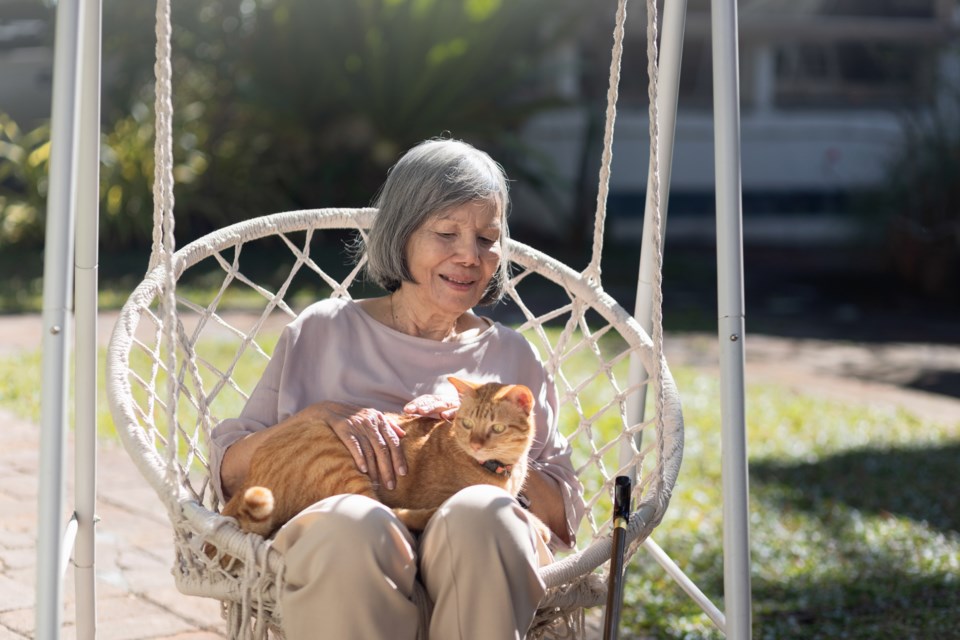Do you instantly feel your spirits lifting after watching animal videos or snuggling with a pet? You are not alone.
Animals are known to have a profound impact on people’s well-being, and findings from a Telus-commissioned survey notes that nearly two-thirds of Canadians have been motivated to get a pet to cope with mental health challenges and loneliness, and 80 per cent feel happier after watching animal videos.
Recognizing the importance of animals in the life of Canadians, Telus launched the Critter Comforts playlist on YouTube and Optik TV (channel 147) for viewers to enjoy watching critters uninterrupted anytime.
Launched on Feb. 20, the comfort critter video playlist gives Canadians a chance to feel good and support a good cause — for every view of the Critter Comforts playlist from March 1 to 31 on YouTube, Telus will give $1, up to $100,000, through the Telus Friendly Future Foundation.
The money raised will go to charities that support service animals, wildlife rehabilitation and animal therapy across the country, including Burnaby’s own Pacific Assistance Dogs Society (PADS).
“PADS is so grateful to Telus for all of the many ways they have supported us and our programs over the years,” the executive director of PADS, Laura Watamanuk said. “From helping us place dogs with families that have special needs to assisting with upgrades to our Burnaby Campus, the support from funds raised through the Telus Critter Comforts Playlist will help us continue to transform little puppies into life-changing service dogs.”
The survey also found that 94 per cent of pet owners agreed that pet ownership has positively impacted their life, and even non-pet owners agreed that having a pet or interacting with any animal has a positive impact on health and overall well-being.
Dr. Aubrey Fine of California Poly State University, a psychologist and pioneer in the field of animal-assisted therapy, said that animal -ssisted interventions can help support the lives of many people.
Fine has authored numerous books, one of which is called the Handbook on Animal Assisted Therapy, in which he delves into understanding the biological mechanisms of why animal-assisted therapy works, and how it can benefit humans.
In the book, he talks about the psychological effects of the human-animal bond, how pets can help in fulfilling the innate human desire to bond, and how animals provide strength and comfort. But, he also notes that in addition to providing emotional relief, animals also can physically calm down their owners by reducing blood pressure and heart rate and reducing levels of stress hormones.
While dogs are the common animal of choice for most people, Fine notes there are important qualities for therapy animals. For one thing, they should want to engage with the human; for another, they should be reliable, and have highly consistent behaviour.
“You're looking at therapy animals being dogs, but an organization, for example, Pet Partners, registers nine species of animals including small horses, alpacas, birds, cats,” he said.
Dogs are a popular choice because “the reality is that there is this very mutual connection and it's partially because of understanding of nonverbal behaviour,” he added.
“But now the research in cognitive canine science is showing that not only dogs read our emotional, nonverbal language, the dogs actually understand a lot more words than than what we anticipated.”
The connection is not limited to touch and petting, Fine emphasizes.
“Virtual viewing of animals in a comfortable interaction can [also] cause an individual to have some of those same benefits of reduction in cardiovascular levels that you're going to see a more regulated blood pressure and breathing.
“Some of us benefit from our own personal animals. We walk with them, we play with them, we live with them, but for many of us, we may not always have the luxury of being around animals.”
For those who can't be around live animals, Fine says watching videos can help people connect with animals and bring a smile and sense of comfort — “the animals around us will be make our days even richer.”



